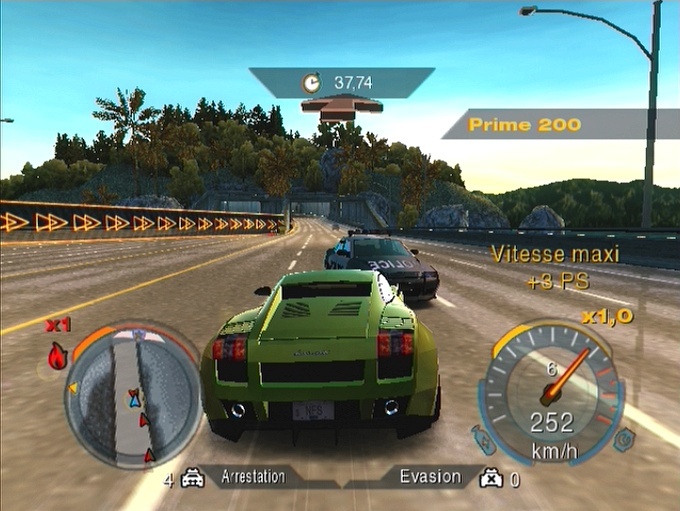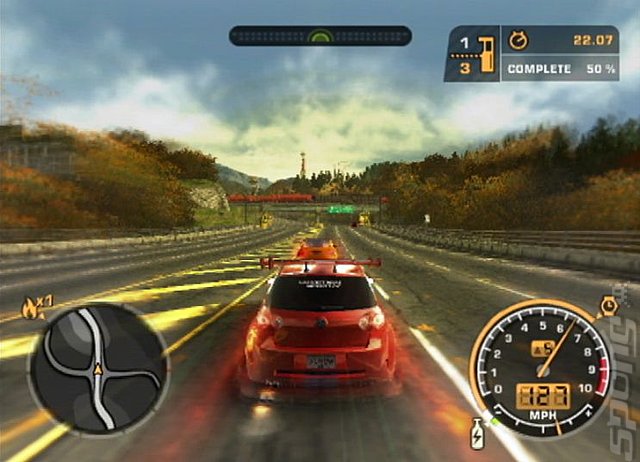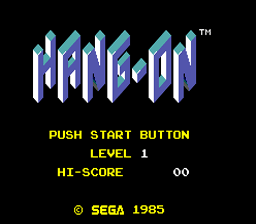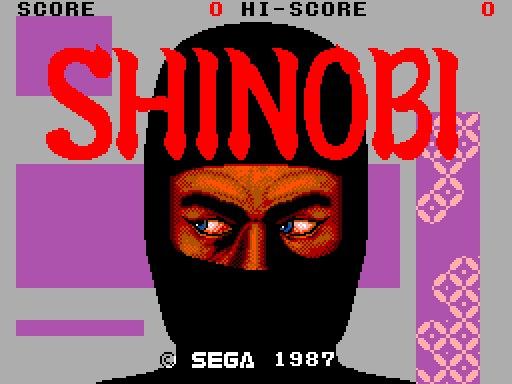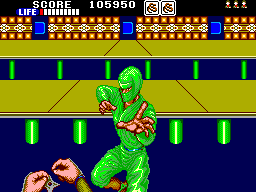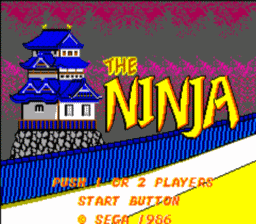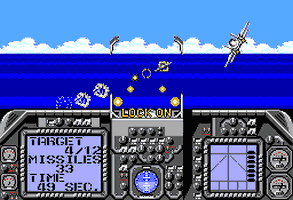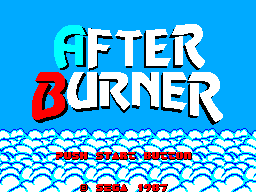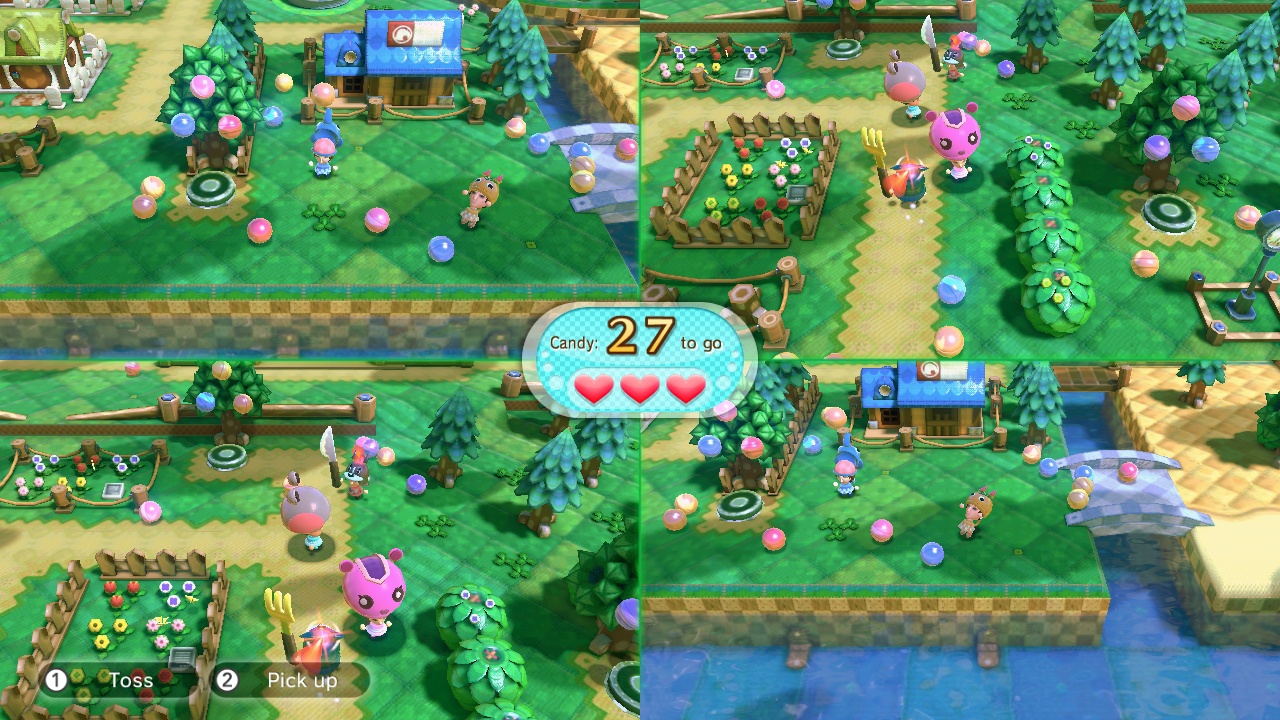Game: Need For Speed Carbon
Console: Sony PlayStation 2
Developer: EA
Release Date: 31st October 2006
Need for Speed Carbon sees racers taking to the canyon for some of the races in the game, in addition to the usual street racing, and cop chases. The plot of the game follows on from Need For Speed Most Wanted, with the player driving the last prize car out of Rockport (the setting for Most Wanted) and into Palmont (the setting for Carbon), where an incident happened involving the player. More details of this are uncovered throughout the game leading up to the boss race. Although the plot isn't the strongest part of the game its a marked improvement from previous installments.
The majority of gameplay is dedicated to racing inside the city of Palmont, in order to "gain control" of territories, when enough races are won in an area, leading to a challenge from the gang leader who used to control that area. Some of the races and all of the bosses races are conducted on the canyons, which are downhill tracks with lots of handbrake turns and the possibility of falling off the edge at times.
Overall the game is fairly short, compared to other games in the series, I played for a little while before writing the review and had already completed 20% when I quit. There's 4 districts to take over by winning races, each with about 12 races in, which'll need winning before the boss challenges you. Although this makes for a fairly good system of play, its disappointingly easy to gain territory. The races themselves also seem far too easy compared to other installments (although this might just be due to the fact I've played too much Need For Speed recently).
In the races which aren't held on the canyon, there's a new wingman system. Out of the 3 other racers on track, one of them is on your team and able to help you in one of three ways. There's blockers who'll shunt opponents out of the way, drafters who'll allow you to slipstream them and go faster, and finally scouts who find the fastest route around the track. Not only do these seem fairly unnecessary, but the NPC's in the cars will make pointless comments and sometimes even get in your way. A lot of the time when they do help you out, the wingman will end up winning the race, which still counts as a win for you, but feels hollow in the grand scheme of things.
Overall the additions to this game aren't all that enjoyable, the focus having been taken away from police chases (which aren't as fun in game as Most Wanted), and put on Canyon races which could be better. Drift mode has been made a little easier to play, and the entire game difficulty feels too low, especially with teammates in the equation as well. Musically the game is pretty poor, re-using the police chase theme from Most Wanted, and choosing a fairly poor selection of "EA Trax".
Graphically similar to Most Wanted and worse off in gameplay, this is the first game of the second era to have not gone one better than its predecessor. It needn't feel alone however, things are about to get worse...
Rating: 68/100
Grade: C
Game: Need For Speed ProStreet
Console: Sony PlayStation 2
Developer: EA
Release Date: 23rd November 2007
Very different to the previous installments from the outset, Need For Speed Prostreet sees the player whisked off the streets to "race days", held seemingly in the middle of nowhere, around a dirt track with no other traffic or streets to be seen. From somewhere there booms the voice of an announcer who can't stop going on about how well you're doing, and gameplay is based around "Dominating" your rival racers on the track .
The handling is the first thing that's noticeable upon starting the game, completely different from any of its predecessors, it's inbetween arcade and simulation and makes the cars feel horribly heavy and unrealistic. This makes gameplay less enjoyable and rewarding overall as it almost feels as if the player is not in complete control of the car at all. No matter what car is chosen, the handling is basically the same and although there's more choice of cars than in some previous installments it almost doesn't matter.
Swapping the streets for the racetrack was another ill-informed descision. If there's one thing we've come to expect from the Need For Speed series as a whole it's exciting, fast paced night-time street racing. This installment delivers almost none of those, barely even able to be called racing due to the fact that the AI racers are beyond useless. There's a certain degree to which I can tolerate the computer player being bad at racing, but to finish 2 minutes and 10 seconds ahead of another racer, on a short race is not even funny. The whole concept of dominating your opponents seems to have come out of the fact that they can't compete at all.
The races themselves are boring and need more variation, "Grip" racing is just another name for circuit racing, Drag racing features a new tyre warming minigame that not only seems ineffective and pointless but wastes time also, and an abundance of Time Attack races in career mode sucks any fun that might have been lurking out of the game. As if the game wasn't easy enough there's an optional braking meter on the road in case you want to win by even more of a margin.
All cars in the game can be modified and "autosculpted" to the player's wishes, but graphically the game is only really as impressive as Most Wanted or Carbon on PS2, if a little less so due to the fact there's no city to render. The game comes across as a messy, unrewarding bore with terrible handling and no real incentive to complete, its only real value coming from being a sort of Redneck Raceday Simulator, for which I have no need.
Rating: 40/100
Grade: E
Game: Need For Speed Undercover
Console: Sony PlayStation 2
Developer: EA
Release Date: 17th November 2008
Undercover is the last Need For Speed game to appear on the Playstation 2, essentially being developed for Playstation 3 with a stripped down version being released for the older console. The focus shifts back to street racing and police chases, from ProStreet's Race Day setup and the cars handling is much more similar to that of Underground and Most Wanted than that of ProStreet. It seems EA acknowledged the mistake they made with ProStreet and wanted to evoke the success of earlier titles with Undercover.
The gameplay in Undercover certainly feels more like the kind we're used to with a city environment through which the player can roam freely, accepting races and challenges. The plot seems to want to be a bigger feature of this game than past installments however, unskippable live action cutscenes are played after every couple of major race wins. Unfortunately the story is somewhat vague, I spend most of the cutscenes trying to work out whether I'm an undercover cop or not. Personally I'm not too keen on being forced to keep up with the story, or the added "Driving Missions" that come along with it.
The main race types are still in the game, Circuit, Sprint etc. although in the early stages at least they take a back seat to police chase milestone events, somewhat like Most Wanted, except the police work somewhat differently. For example; speeding past a police car at 3 times the posted speed limit in this game will earn you no attention whatsoever, but clipping a police car on the way past, no matter how fast will set more police than you knew existed on your car. This dents the realism somewhat, and with already downgraded graphics, all the police chases really serve to do is make me want to pop in the disc for Most Wanted.
Musically the game has a decent selection of music, covering many genres, my only complaint being instrumental versions of tracks already on the soundtrack having been included also, so you can never quite tell whether its safe to sing along. The selection of in game cars is fairly wide although many have appeared in previous installments, a lot of them muscle cars are very similar types of car to one another, it would have been nice to see more variety there. The aerosculpt feature stays in the game, for car customisation, although it's hidden in submenus at the safehouse instead of being the large part of the game it once was.
Overall, the game seems to want to be more of an action film with gameplay elements than anything else, but its races are standard Need For Speed races, if a little easy. Its police chases pale in comparison to Most Wanted, and the new parts are either tedious and unskippable, like the cutscenes or unnecessary for the most part, like the huge arrow in the sky which directs the player during missions and other parts of the game. For 2008 the game is hardly impressive graphically or in terms of gameplay. I don't think a lot of effort was put into this version compared to the PS3 version, and it shows.
Rating: 60/100
Grade: D








